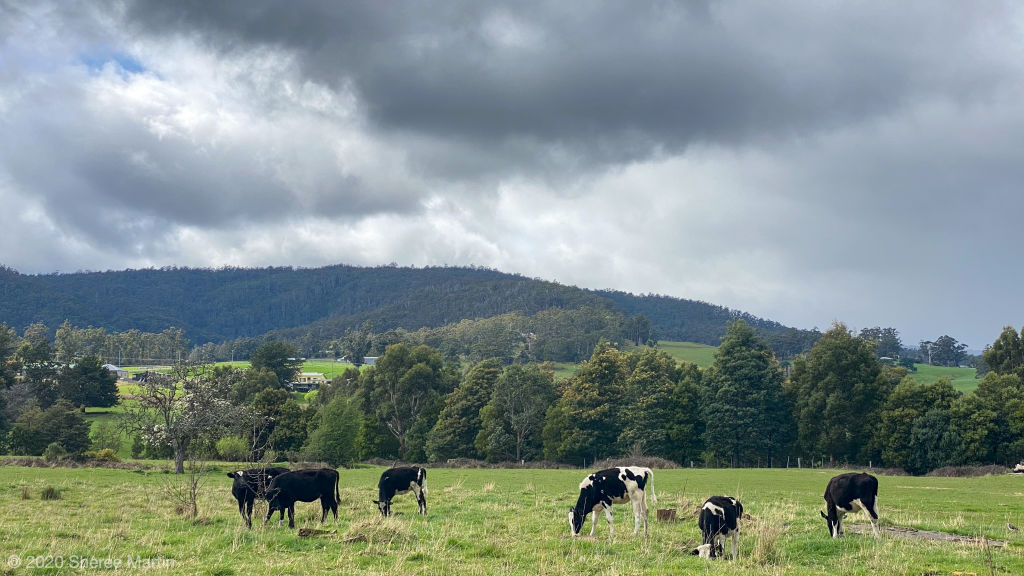Australian real estate may be hitting new price highs in cities around the country, but during the peak of COVID last year it was farmland that set the ball rolling.
A new report has revealed the median price for a hectare of Australian farmland increased by 12.9 per cent nationally last year, in its seventh consecutive year of growth, with one region seeing prices leap by 65.2 per cent.
The Rural Bank’s Australian Farmland Values 2021 report uncovered extraordinary price hikes across the board over 2020. The Northern Territory had that biggest leap (65.2 per cent), but prices rose 25.3 per cent in Tasmania, 19.3 per cent in Western Australia, 15.6 per cent in NSW 11.8 per cent in Queensland, 10.9 per cent in South Australia and 6.9 per cent in Victoria.
It was the first time in 15 years that all states experienced growth in the median price per hectare, demonstrating the resilience of farmland values through big upheavals such as the pandemic.
The breaking of the drought, historically low interest rates and even the advent of COVID-19 have all helped to create the perfect storm for the agricultural industry, according to Rural Bank chief operating officer Will Rayner.
“While we have seen strong positive trends in Australian farmland for a sustained period of time, this is the first time in 15 years we have seen all states record positive growth in the same year,” he said.
“In agriculture, there’s such an energy and positivity in the market at the moment,” he said. “It’s the same as the buzz around real estate. We’re seeing so much confidence as a result of a whole range of factors.
“We’ve been enjoying good seasons with areas coming out of drought, low interest rates, commodity prices like wheat and red meat at good levels – and at all-time highs in some parts of the market – and then we have FOMO [fear of missing out] too. With the cost of debt falling, with the interest rate, it’s giving people confidence to invest back into the land.”
The highest price of land nationally at the moment is in Tasmania, which has just hit $13,691 a hectare, with the north-west region experiencing the largest increase in price, 26.7 per cent up on 2019. As well as strong commodity prices and low interest rates, however, there were other factors also at play, such as good and assured access to water supplies.
“Farmland remained tightly held,” said Dean Lalor, of Rural Bank, Launceston. “The value of high surety irrigation land was recognised by buyers in the northern and north-west regions of the state which led to a scenario whereby demand outstripped supply, causing the value of farmland in these regions to increase sharply.”
Meanwhile, although Victoria clocked the lowest price rise of the country, its farmland price was among the highest, at a record $8114 a hectare. The total value of farmland traded in 2020 was about $1.2 billion, an increase of 17.1 per cent on 2019, largely driven by favourable seasonal conditions.
“Larger parcels of land in cropping areas such as the Mallee and North Central were highly sought after, while smaller high-value grazing properties were met with strong demand in reliable rainfall regions of the south west and north east,” said Andrew Smith, of Rural Bank Eastern Australia. “Gippsland saw strong demand for larger parcels of grazing land which altered the transaction mix in the region.”
NSW had the next highest price for farmland at $5855 a hectare, buoyed by the drought breaking in the north of the state. Areas hit by bushfire predictably saw a fall in sales activity, while grazing land in the south-east and Riverina was highly sought after.
The Northern Territory, despite the massive price rise – largely a result of sales of some of the larger properties which often tend to distort the market – had one of the nation’s lowest land prices, at $3392 a hectare. Only Western Australia was below it, at $3066 a hectare.
At the higher end of the table, South Australia followed on from NSW, at $5482 a hectare and Queensland at $5200 a hectare.
Mr Rayner said the pandemic had probably helped farmers in myriad ways, despite the shortage of labour many experienced as a result of backpackers not being able to come and work, and restrictions on travel around the country.
“It almost proved a positive for the agricultural industry because people in the cities started to understand the role of the farmer more,” he said. “With shortages, and worry about shortages, people came back to realising the importance of agriculture and farms in producing food.
“People also become more MasterChefs at home, so appreciated the quality of Australian produce. So, I think there’s greater recognition now than there was prior to COVID.”
Surging confidence in the sector is further encouraging farmers, with most of the transactions of rural land in the past year being from Australian rural landowners purchasing land next door to their holdings so they could claim more economies of scale.
Larger corporates have also been putting land on the market to take advantage of stronger selling conditions.
The big leaps in price are now also leading to fears about cost being a barrier to bright new entrants wanting to come into rural industry. But, overall, it’s being seen as a vote of confidence in Australia’s farming community.
“There’s this large part of agriculture that’s solid, sustainable and innovative, and which has the ability to work through very volatile conditions like short-term drought, flood and bushfire which can all have a devastating impact,” said Mr Rayner.
“But long term, it’s very sustainable and stable. And, Australian farmers are among the most resilience and innovative in the world.”
